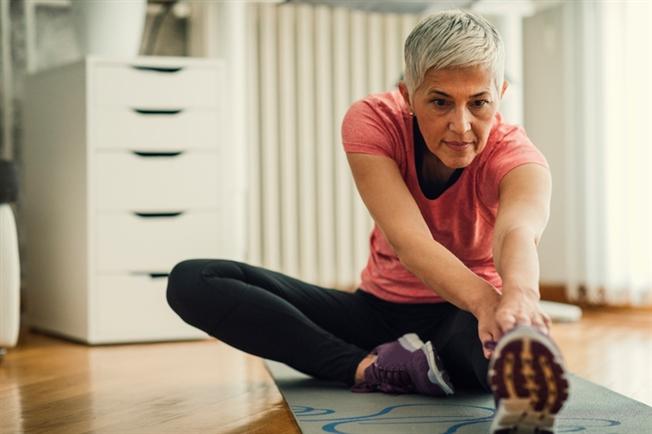Stretches to keep you strong

Aging can take a toll on health in many ways. But while most people consider health issues like heart disease, shingles, and osteoporosis that commonly occur during aging to be the biggest risk, many are overlooking less-talked about issues, include muscle strength.
"As we age, our muscles become shorter and lose their elasticity and strength," explains Swati Sanghani, physical therapist with the Bryn Mawr Rehab Outpatient Network at Main Line Health. "It also affects the structures of our bones and joints, which results in a decreased range of motion, particularly in the spine, shoulders, and hips."
Although it may seem trivial, stretching is an important component of a fitness routine for seniors. Combined with strength training and aerobic exercises, stretching can help older adults retain their independence by allowing them to walk safely and independently, live in their homes longer, and enjoy social activities. Below, Sanghani explains some basic stretching guidelines for older adults.
Warm up for stretching
Stretching is an important part of a fitness routine, but it's important to make sure you warm up prior to beginning your stretching. To warm up, simply take a warm shower or walk for five to 10 minutes. Keep in mind that, as you stretch, you shouldn't be in pain. Avoid bouncing or holding your breath while performing a stretch; good breathing can help relax muscle tension and improve your posture. Take deep breaths with each stretch. If at any point you experience pain, remember to stop.
Upper body stretches
Depending on your range of motion, there are different recommendations on how much time you should spend stretching each week. Sanghani recommends stretching three times per week to maintain your range of motion, but increasing your stretching sessions to four to five times per week if you're looking to improve your flexibility of a particular joint or muscle.
To begin, start with your neck. Rotate it gently from side to side, stopping if it becomes painful. Your neck rotations should be pain-free. Add side neck bends and shoulder rolls, and pinch your shoulder blades together ten times. These exercises will help strengthen your neck, and can decrease neck pain you might feel during activities like driving. Next, try shoulder stretches. Raise your arms above your head and stretch your shoulders upward towards the ceiling. This will help improve your range of motion when you're reaching for something off the top shelf.
In addition to these basic stretches, your routine should also include stretching your chest, arms, and back. Make small circles with your wrists and ankles to increase their range of motion, and bend your toes and fingers, as well.
Lower body stretches
Unlike upper body stretches, which can usually be done more quickly, lower body stretches should be held a little longer. Hold each lower body stretch for 20-30 seconds, and repeat three to five times a session, as your body permits. If a stretch is painful, stop.
To stretch your lower body, try moving your hips, knees, and calves slowly in their full range of motion. Focus especially on your hamstrings, calf, and quadriceps muscles. To stretch these muscles, try sitting on the edge of a chair with your legs out in front of you.
Remember, before you begin any stretching or fitness routine, it's important to consult with your physician. They can help ensure your routine is safe for you.
Ready to start stretching? Bryn Mawr Hospital's weekly 'Stretch your limits' class offers a light aerobic warm-up, resistance training with dumbbells and elastic tubing, and stretching with chair Tai chi and modified yoga. Register for an upcoming class to get started.
To make an appointment with a Main Line Health physician or to set up a complete exercise routine with a Main Line Health physical therapist, call 1.866.CALL.MLH (1.866.225.5654).
 Content you want, delivered to your inbox
Content you want, delivered to your inbox
Want to get the latest health and wellness articles delivered right to your inbox?
Subscribe to the Well Ahead Newsletter.
